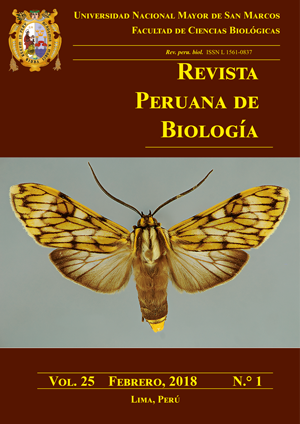In situ propagation of rhatany - Krameria lappacea (Krameriaceae): factors limiting natural regeneration and effects of reseeding measures
DOI:
https://doi.org/10.15381/rpb.v25i1.14345Keywords:
Krameria lappacea, wildcrafting, germination, seed treatment, sustainable use.Abstract
Krameria lappacea (rhatany) is a well established medicinal and dye plant that is used since pre-Colombian times. In the last 15 years the biology, distribution and abundance of rhatany in Peru was investigated and methods for a sustainable wildcrafting were developed. The objective of this work was to investigate which factors limit the natural propagation and to explore whether the reseeding measures can contribute to the establishment of new plants in situ. Investigating the germination and in situ propagation, greenhouse trials showed that the seed burial is an important, limiting factor for the germination of K. lappacea und the germination rate can be increased (3—4x) by burying the seeds. Both the burial of the seeds during collection and re-sowing measures on selected lots can contribute to the rejuvenation of the population. Secondary roots, which are left in the ground during harvest, are showed to form new shoot meristems and develop into new plants. Pre-treatment (scarification) of the fruits does not clearly influence the germination success, but it facilitates the handling of the seeds during re-sowing and ensures the use of only fully developed, viable seeds.Downloads
Downloads
Published
Issue
Section
License
Copyright (c) 2018 Nicolas Dostert, Fatima Caceres, Grischa Brokamp, Maximilian Weigend

This work is licensed under a Creative Commons Attribution-NonCommercial-ShareAlike 4.0 International License.
AUTHORS RETAIN THEIR RIGHTS:
a. Authors retain their trade mark rights and patent, and also on any process or procedure described in the article.
b. Authors retain their right to share, copy, distribute, perform and publicly communicate their article (eg, to place their article in an institutional repository or publish it in a book), with an acknowledgment of its initial publication in the Revista Peruana de Biologia.
c. Authors retain theirs right to make a subsequent publication of their work, to use the article or any part thereof (eg a compilation of his papers, lecture notes, thesis, or a book), always indicating its initial publication in the Revista Peruana de Biologia (the originator of the work, journal, volume, number and date).






